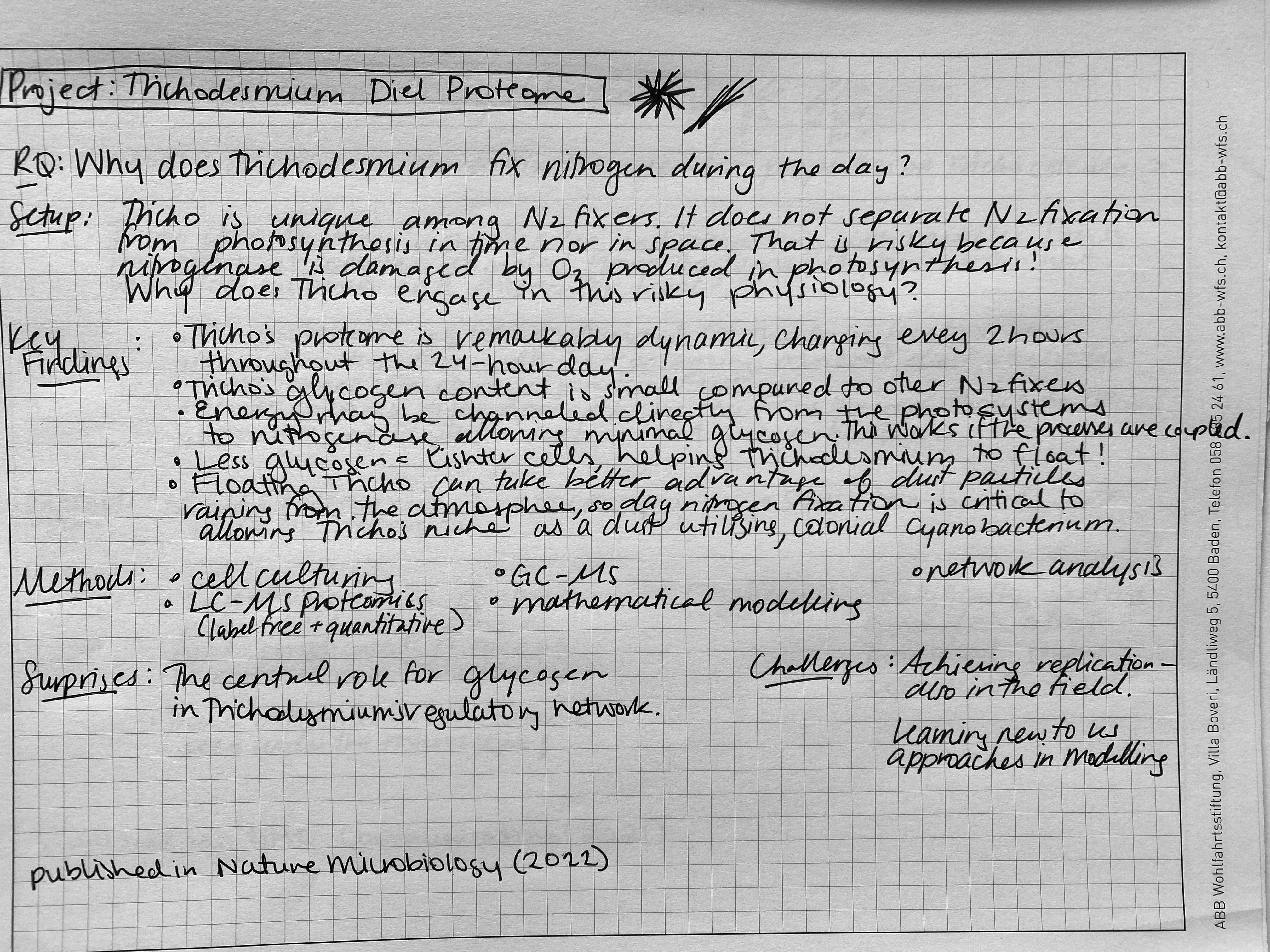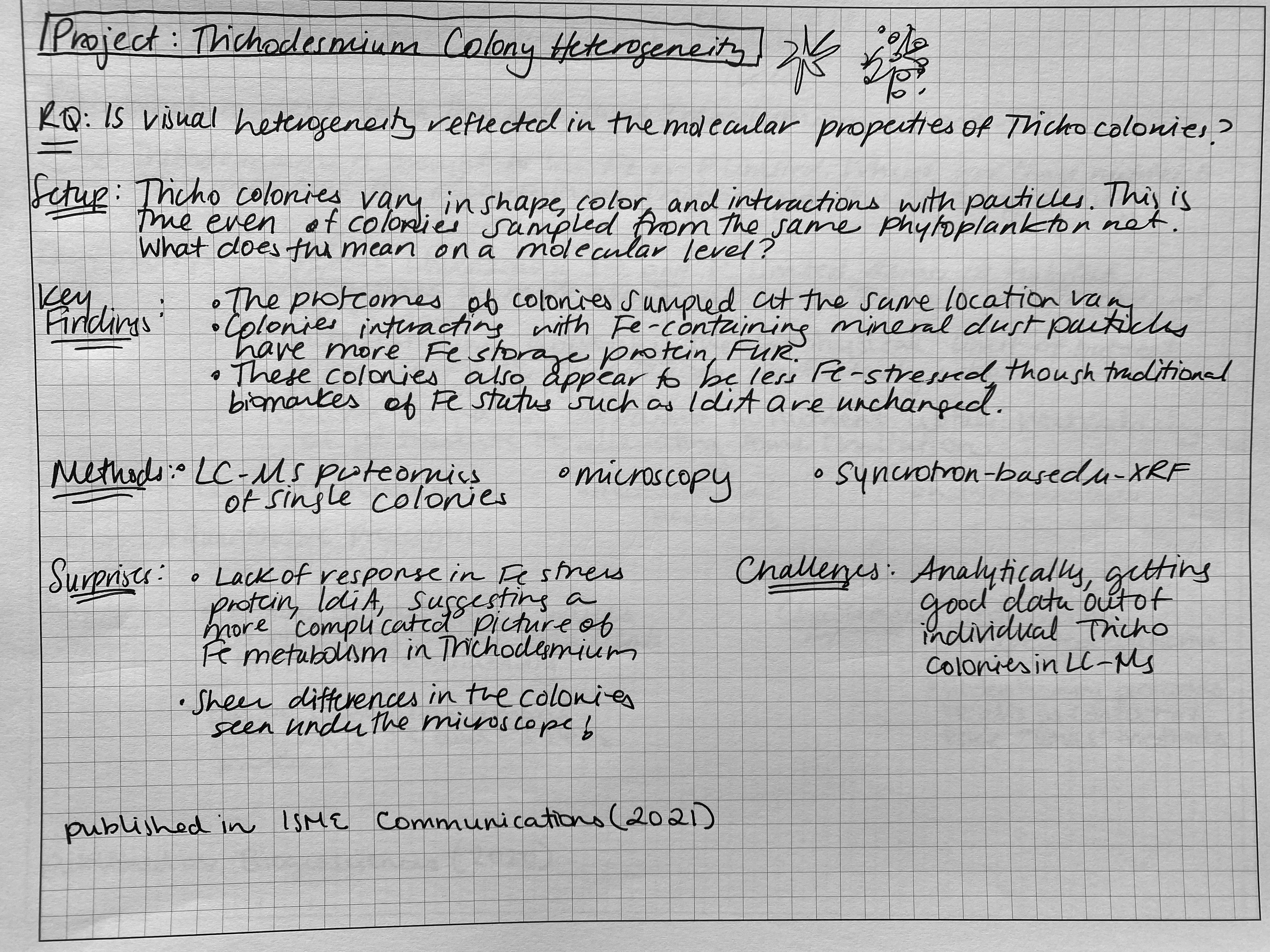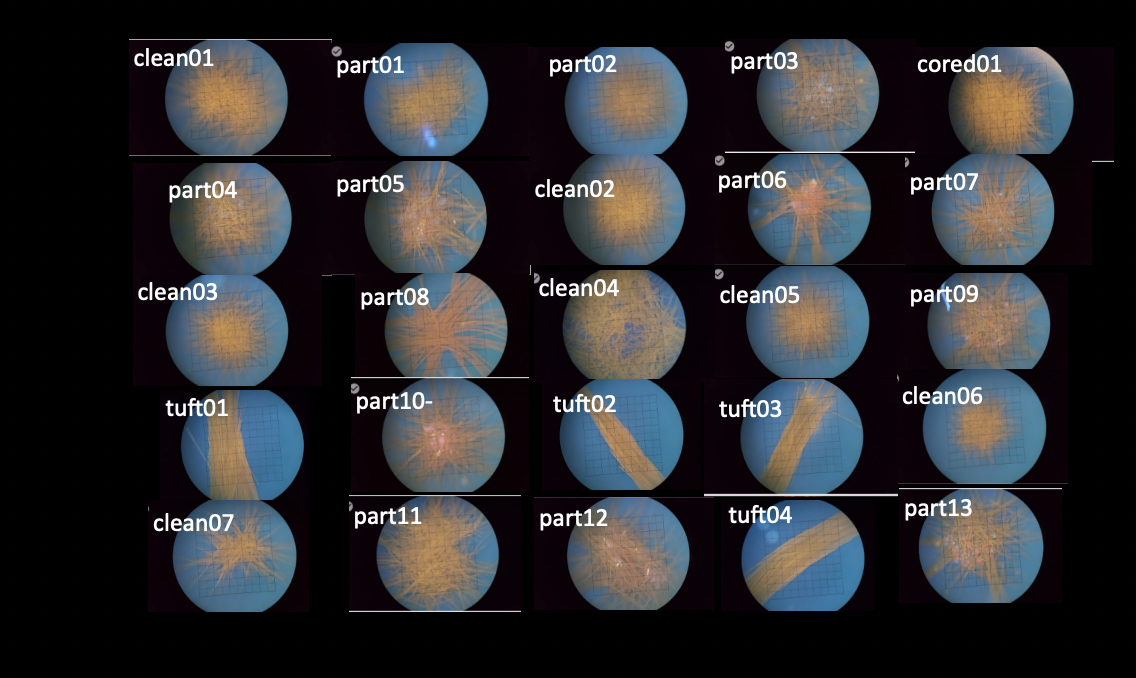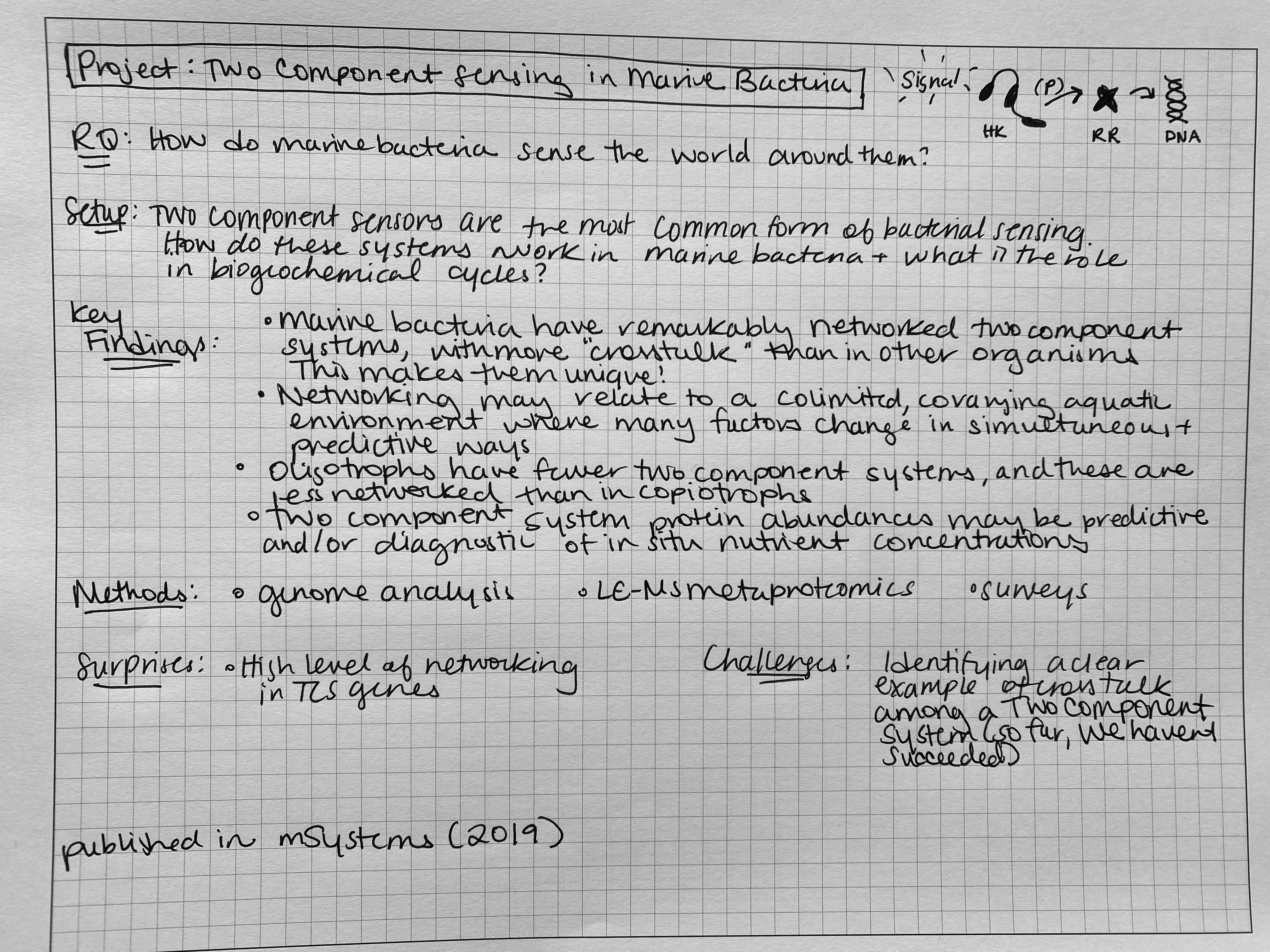Trichodesmium is unique among nitrogen fixers. It fixes nitrogen and carbon simultaneously. This is risky behavior - why would Trichodesmium do this?
The project used cell culturing, physiology, label-free protoemics, quantitative proteomics, GC-MS, mathematical modeling and network analysis.
This work was published in 2022. There is a much larger body of literature/debate about how Trichodesmium manages nitrogen fixation and carbon fixation simultaneously during the photoperiod. You can review snippets of this debate here. Clearly there is more to understand about Trichodesmium’s molecular physiology, and we plan to continue investigating!
 read more
read more


 A look at all the colonies we examined in this study. From Figure S1 of the publication....
A look at all the colonies we examined in this study. From Figure S1 of the publication....